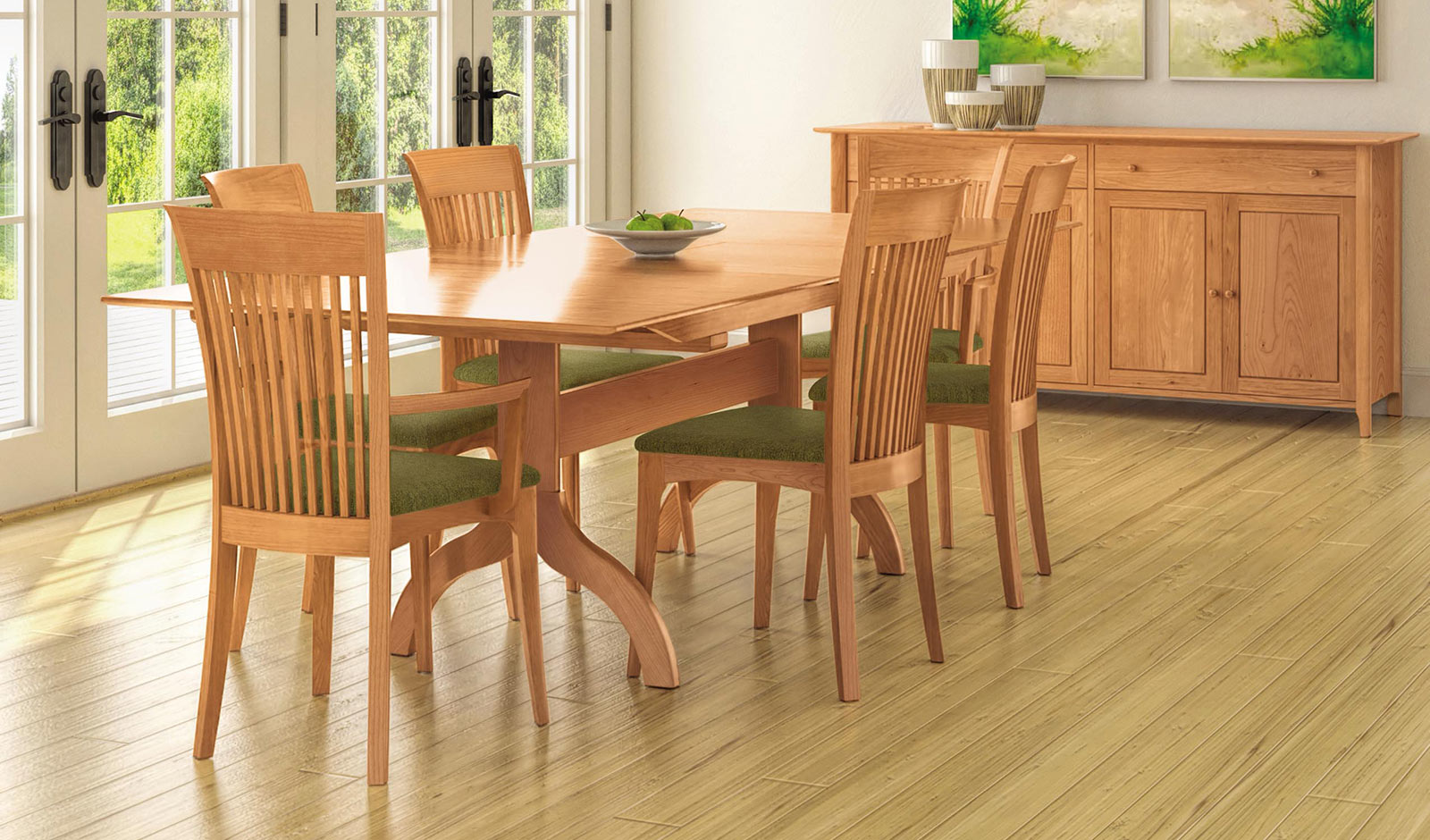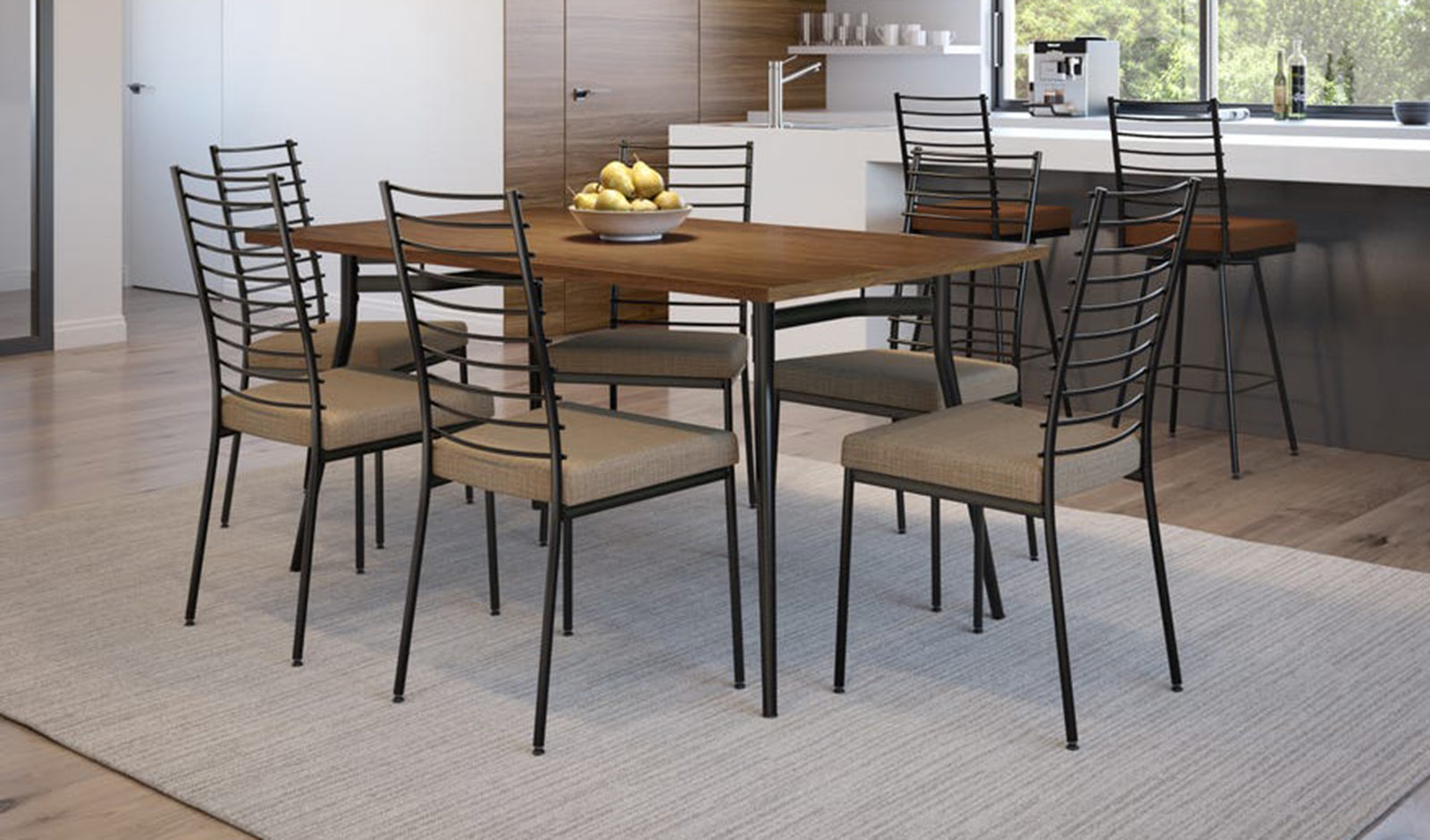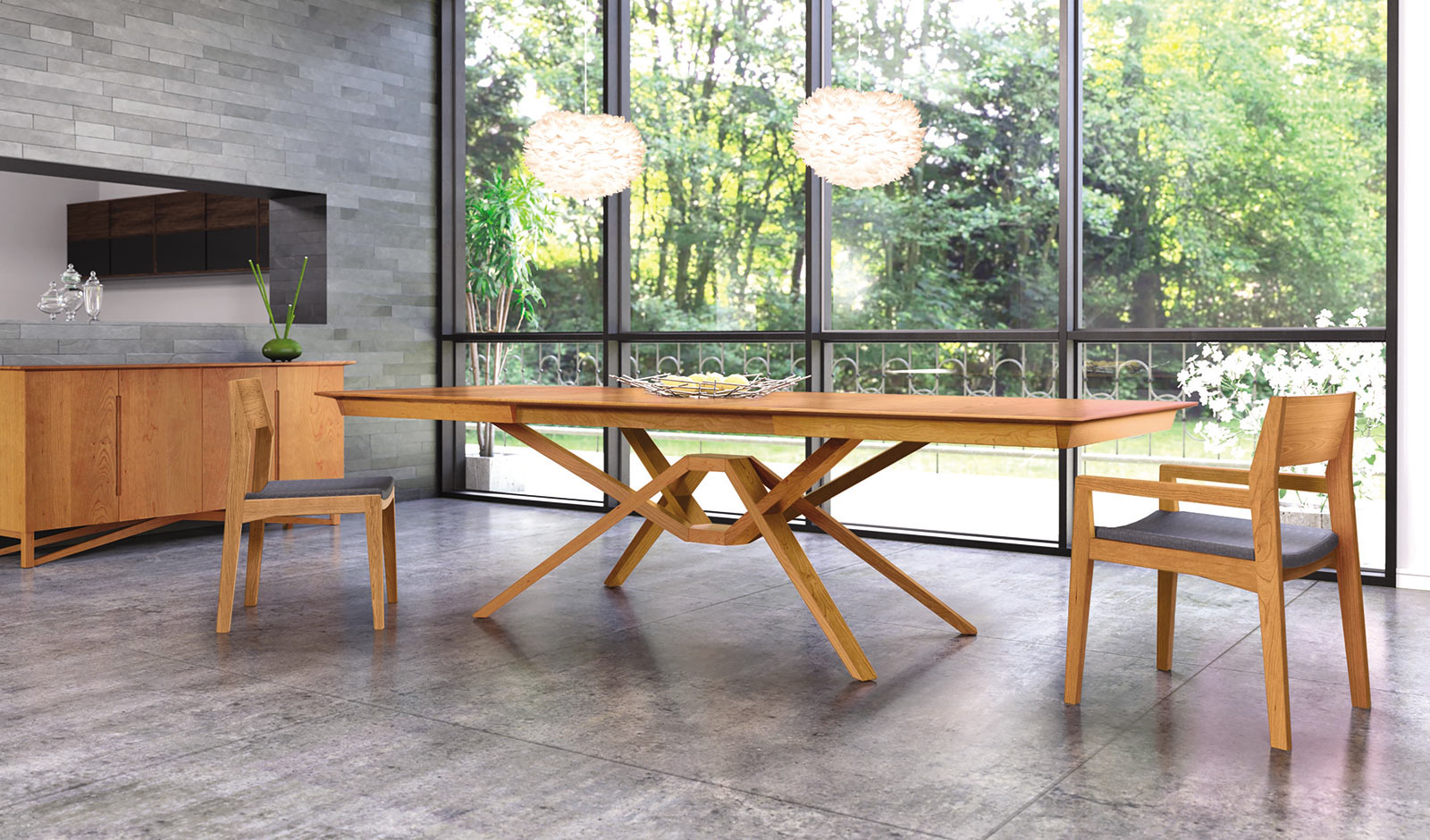In our view, the dining table is one of the most important pieces of furniture in your home. So many of life’s great moments are shared around a table – from holiday celebrations to family meals to game nights with friends.
Many of our customers come in with a pretty good idea of the style of table they’d like – traditional or modern, solid wood or glass-topped – but we get a lot of questions about table size. How much table space do you really need? What size table will fit comfortably in your home?
The answer will be different for everyone, but these are the three factors we feel are most important to consider when choosing the perfect dining table for your home.

Table Width
Ideally, the width of your dining table should be generous enough for two people to sit across from one another, with enough space for serving dishes in the center. At the same time, your table shouldn’t be so wide that you feel disconnected from folks sitting on the other side – sharing a meal is a convivial experience!
In our opinion, the sweet spot for table width is 39 to 45 inches – but we encourage you to test for yourself. Sit at a table and use placemats to preview different widths. Push the mats closer together to simulate a 36-inch width – does the added closeness feel friendlier, or a little too cramped? Push your chair back to imagine a 48-inch-wide table – does the other side feel far away, or just right?

Table Length
The traditional rule of thumb is to allow 24 inches for each person sitting at the table. If your dining table is six feet long, you can fit three people along each side and one person at each end, for eight people total. Similarly, a four-foot table seats six, an eight-foot table seats ten, and so on.
Truth be told, many people find the 24-inch allowance to be a little cozy. So, if you regularly seat eight people, you might be happier with a seven-foot table. It will give a party of eight some extra elbow room, and even allow another person or two to squeeze in when needed.
A Sidebar about Extension Tables
If your dining area is small, an extension table can be the perfect solution – keep it compact for daily life and add a leaf or two for bigger occasions. But if you have the space, think seriously about a fixed top table in your preferred maximum length. A fixed top opens up beautiful design possibilities – an uninterrupted flow of wood grain, a live edge, or a different top material like glass or ceramic. Plus, even the best-crafted extension table will not be as durable and long-lasting as a fixed top table. When your group is smaller, it’s lovely to gather at one end of a large table, leaving the other end free for spreading out the Sunday paper or doing homework.

Table Walking Clearance
The last factor to consider when choosing a table size is the space you’ll need around it. How much clearance will let you circulate comfortably when people are seated? In our opinion, 30 inches is the minimum distance between the edge of the table and the wall (or another piece of furniture). That distance will allow you to sidle behind someone seated at the table. A more comfortable clearance would be 36 inches – now you can likely walk, albeit carefully. Once you have 42 inches or more of clearance, moving around the table should be absolutely no problem.
When choosing your perfect table size, keep in mind that all of these tips are just pointers, not hard and fast rules. Stay open to compromise! If your dream table is a touch big for your dining area, maybe you can embrace slightly less walking clearance. If you love to entertain but a six-foot table is all your home can hold, squeeze in an extra chair at each end.
Remember, you are always welcome to try sitting at tables of all shapes and sizes at our New Haven furniture showroom – and our friendly, knowledgeable staff will be happy to answer any lingering questions. Come in and stay awhile!
